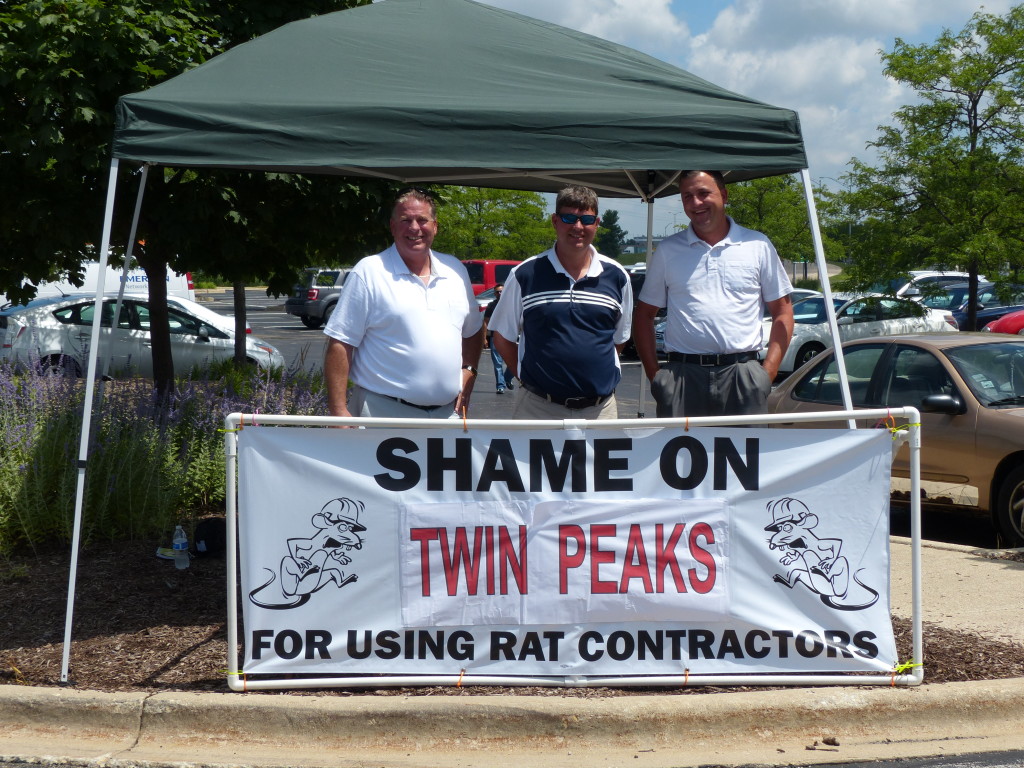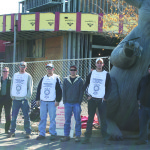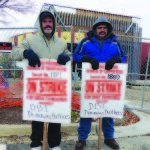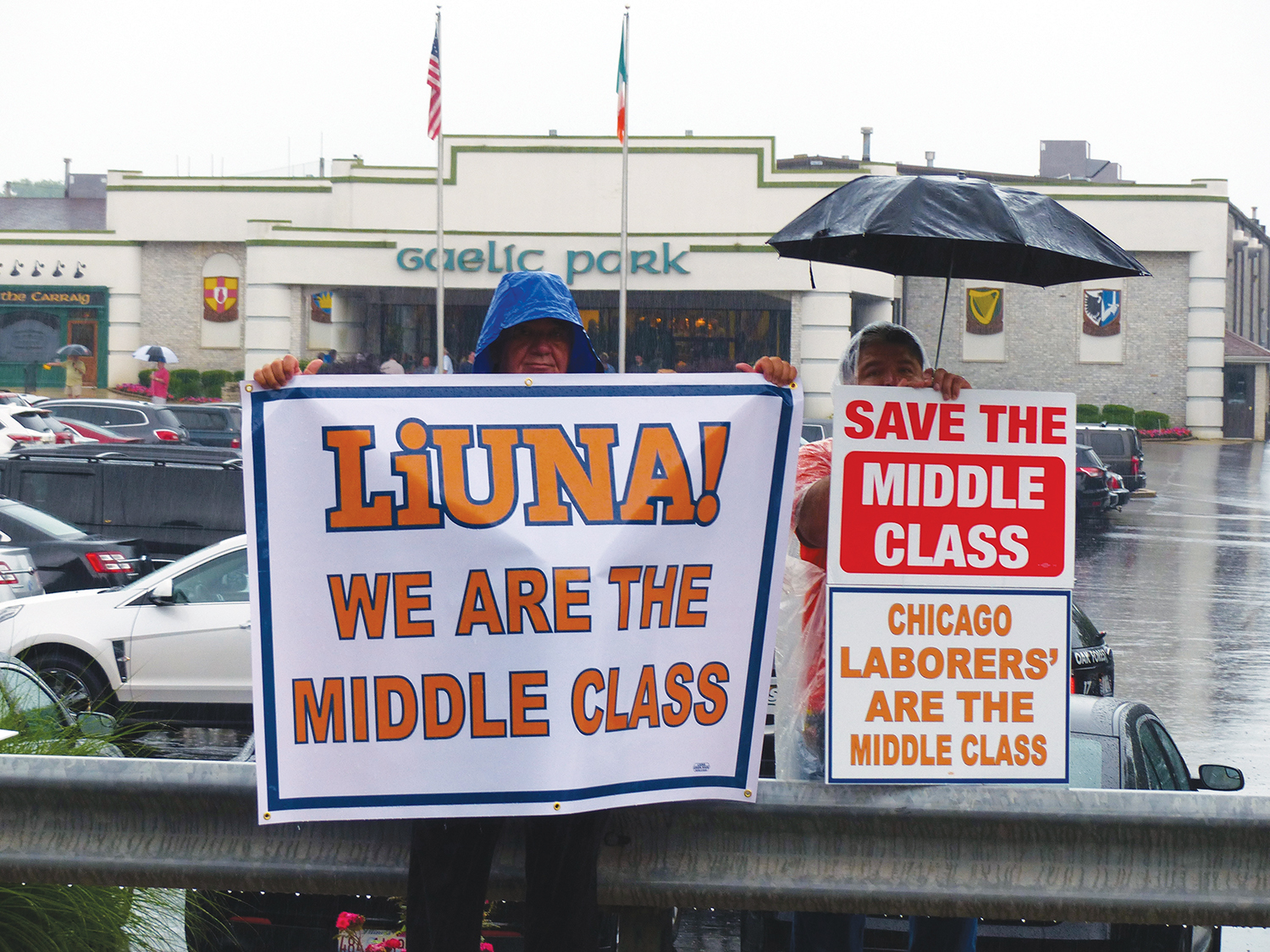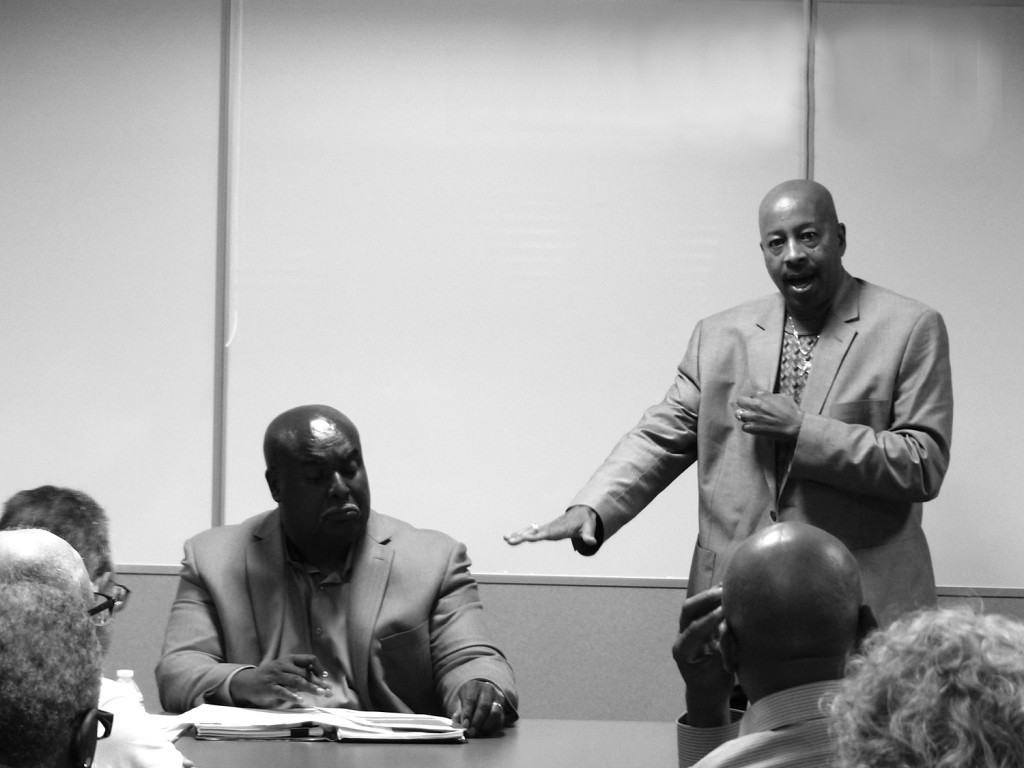
In order for police officers to protect themselves, William Powell, right, uses Willie Mayes Sr. as an example, showing there needs to be a safe distance between officers and suspects. Jennifer Rice/staff photographer
NAPERVILLE — “Unarmed man killed by police,” “Police shooting leaves a trail of questions,” “Man killed by police was waiving an umbrella.”
The public can’t escape these headlines, which seem to be popping up with more frequency.
National and local incidents have raised the question if police officers are too quick to draw and shoot their guns.
In Aurora July 11, an Aurora police officer discharged his gun after he and another officer saw two males alongside a house with handguns. At that point, both males raised their handguns and pointed them in the direction of the officers. According to a statement, one of the officers, fearing for his safety and the safety of his partner, discharged his weapon in the direction of the two males. No one was shot.
During the June meeting of the Naperville Township Democratic Organization (NTDO), retired Aurora Police Chief William Powell and Willie Mayes Sr., who works for the Kane County Sheriff’s Department, had a candid discussion with guests about what it’s like to be behind the badge when confronting suspects. Powell wanted to make it clear he was going to defend what police officers do, rather than defend individuals.
“We have bad police officers out there. I had to fire a few. But what’s happening in our country is nothing new. It has come to the forefront because of [cell phone] cameras and social media.”
For officers, the need for compliance from suspects is extremely important. Compliance ensures safety measures are taking place. It ranges from asking a suspect for his name, to asking a suspect to remove his hands from his pockets.
“When you’re dealing with police in the streets, their main goal is safety. When they ask you something, and you reply to them in the appropriate manner, you will see they become comfortable,” Mayes explained.
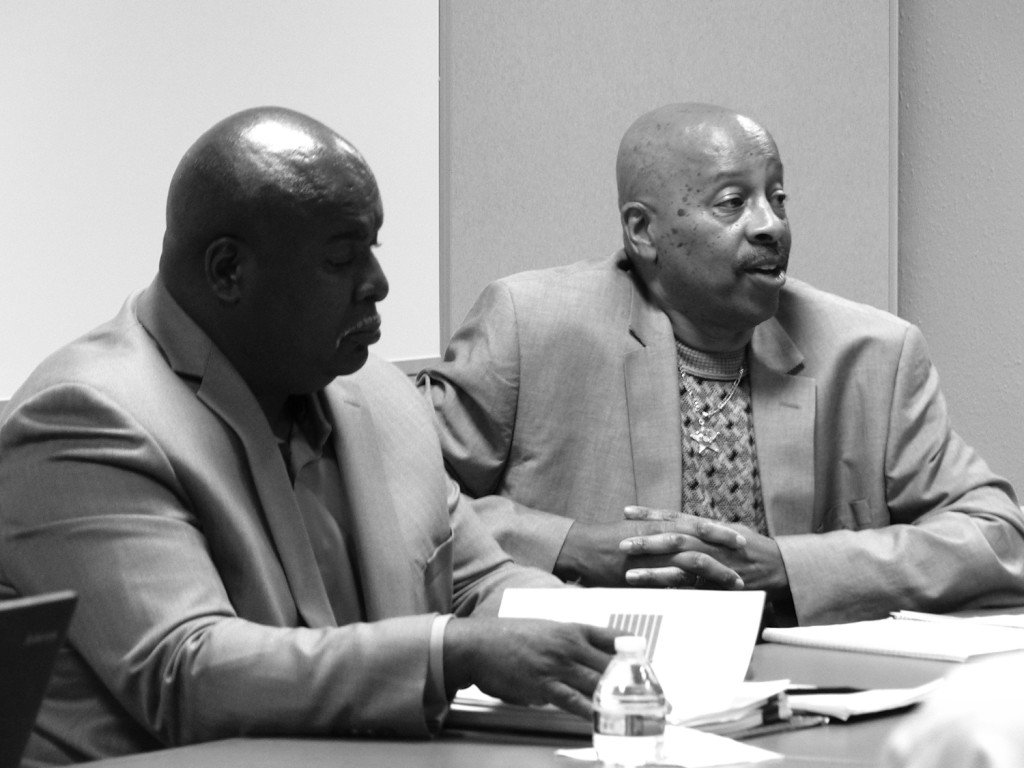
In order for police officers to protect themselves, William Powell, right, uses Willie Mayes Sr. as an example, showing there needs to be a safe distance between officers and suspects. Jennifer Rice/staff photographer
But when that doesn’t happen, an officer’s threat level starts to elevate. “When a person’s hands finally come out of their pockets — do they have anything? What if you see something shiny? Is it a cell phone or a gun? As officers, we have to make split-second decisions that often times take a life,” Powell said.
Officers are always considering the level of force they may take next to get compliance. It may be to use their ASP — their expandable batons, or a stun gun. “These are all things we are trained to do,” Powell said.
Mayes explained further saying, “the amount of force an officers uses, is always going to be a step above what the suspect is giving. We use the amount of force that is necessary to get them to comply.”
Deadly force comes only when an officer feels a threat of bodily harm to himself or others.
Finding solutions are difficult, but the NTDO discussion was a first step in giving civilians a perspective from the police officer. Mayes indicated an issue on both sides, was accountability. “We all need to see each other as human beings.”
